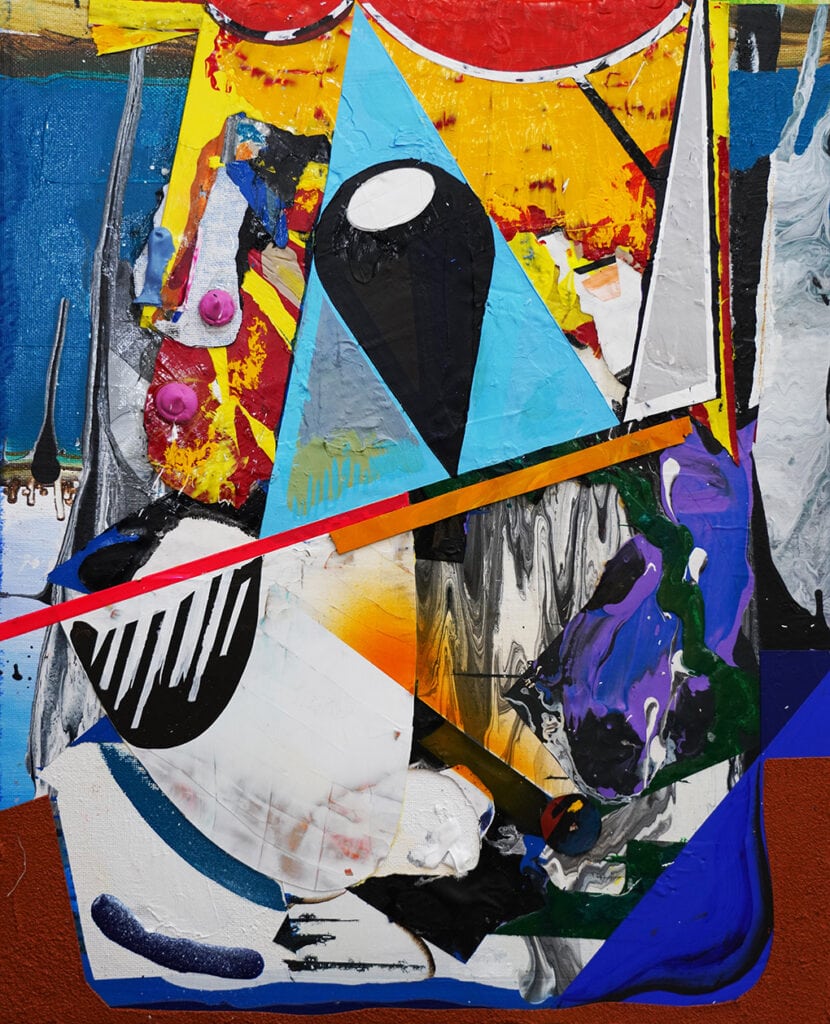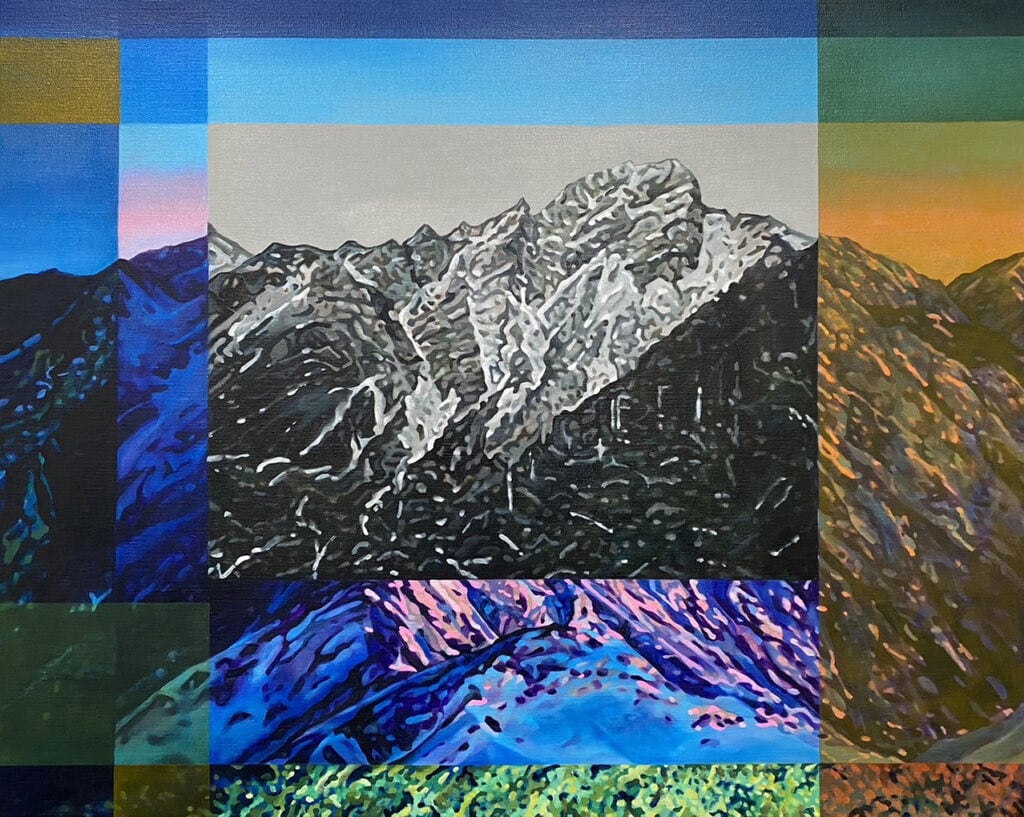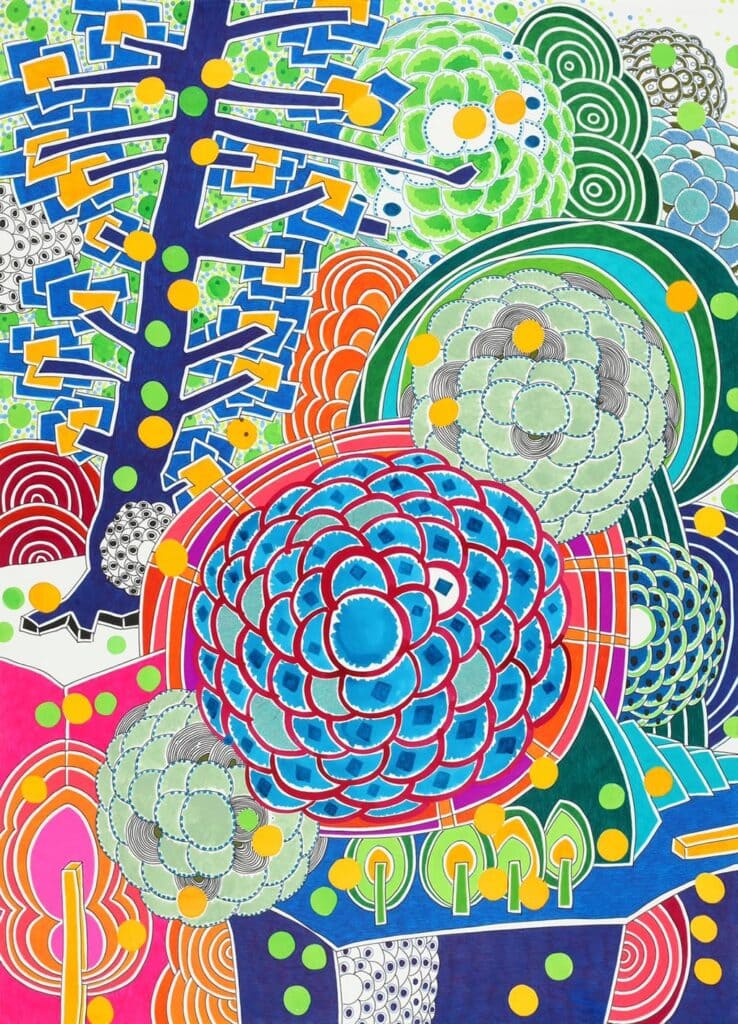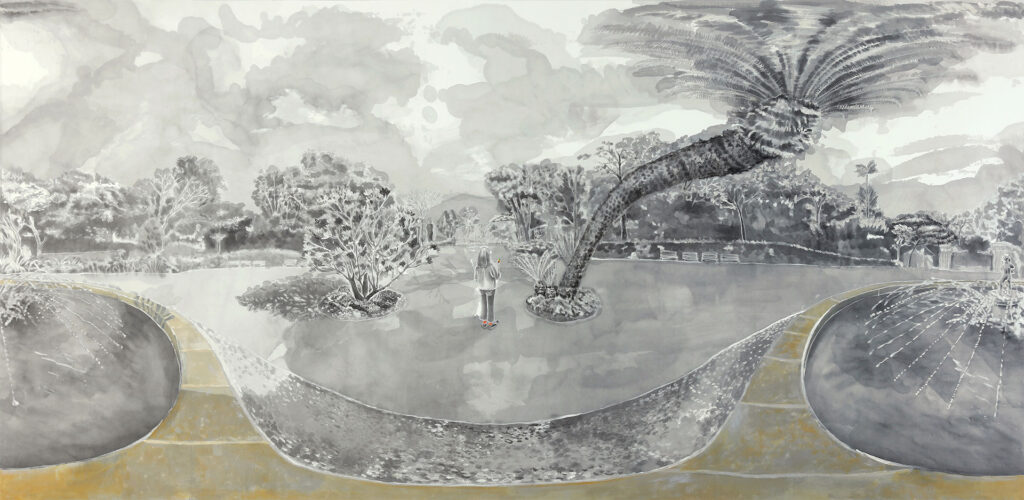2023【未來的未來】之中的「未到來」(à venir)、內壓之表面張力及繪畫真理
文 / 藝評人:胡鐘尹
藝術家:林賢俊、曾雍甯、黃琬玲、謝牧岐、高雅婷、林冠名、廖震平
「對所有藝術家而言,藝術始終是”此在”還未”成可能”的驚喜,是必須從極限開始的一切給予的驚喜,藝術屬於世界的盡頭,只能從再無藝術也無法產生藝術的地方開始。」
Maurice Blanchot ,《Le Livre à Venir》
表面張力與技術冷調
想像一種情境,當藝術家理解社會場域裡各種事件發生與靜止的變化,他們總看見一種「間接性」的視覺呈顯狀態。意思是說,某個事件在日常中發生,這事件與我有關,但卻不太令我在意的奇怪感受,它的發生,在一種無感與延遲的覺察中,後天的被認識到。例如高速列車上快速閃現的風景印象,走入山中聯想到熟悉的歷史記憶,返鄉看到青年生活熟悉的場景,因修繕與改建,看起來與印象中的熟悉感不再相同。
這種「間接」是感受性的既視,是時間延遞產生的知覺變異,是不訴諸眼球的視覺。一方面帶來了第三人稱視角的旁觀感,另一方面也讓藝術創作的「表現」顯得格外的弔詭與值得玩味。
接著,當觀看重新回到眼睛,日常觸及之景觀或物件象徵,對它們素描 - 眼睛的素描,最終圖像/影像要呈顯它自己時,卻宛如像是沿著空間與物體的輪廓邊緣溜走。
「平面創作的張力、深度」、「間接性的觀看模式與思考」、「技術冷調」,可說是解析梳理未來社各藝術創作者的共通特徵,拉出的三條線索。
在過往的藝評論者對「未來社」的研究中,都不約而同的標出了「平面」或者「平面性的」藝術創作探索,是他們共同關懷的核新命題。
在當代藝術的表現中,「平面」仍未被窮盡,仍然還有很大的可能性,不管是平面繪畫或影像的介面,皆可透過不同的觀看邏輯與建構路徑,產生新的意義。
對於未來社創作的「平面」而言,從外部來看:視覺形象的生成、線條與色彩結構、塗層與肌理,影像的反轉與自我映射。或平面的”內部”來看:生產邏輯、物質性、圖像與影像內部的觀念性 / 遺跡性 / 時間感,或者創作者面對繪畫與影像的這一個「介面」,自我、觀看意識及時差感受,如何放置其中的,擺放位子?
「平面之上」與「平面之內」在視覺與非視覺的元素之間,透過觀看的延遲與一邊反覆觀看,另一邊同時將每一次觀看覺察到的差異感知,在平面上留下”複寫”的痕跡,進一步體現了未來社藝術家的作品,因「層理」與「內外的差異」疊合產生的特殊魅力與表面張力
The “Yet to Come”, Surface Tension and Truth in Painting in the 2023 “Future of the Future”
Written by / Art Critic: Hu Zhongyin
Artists: Liao Zhenping, Lin Xianjun, Zeng Yongning, Gao Yating, Huang Wanling, Lin Guanming, Xie Muqi
“For all artists, art is always the surprise of ‘being’ yet ‘becoming possible’, a surprise that must start from the extreme. Art belongs to the end of the world and can only start from where no art can be generated.”
— Maurice Blanchot, “Le Livre à Venir”
Surface Tension and Technical Coldness Imagine a scenario: when artists understand the changes in the events and stillness within the societal field, they always see a kind of “indirect” visual manifestation. In other words, an event happens in everyday life that relates to me, but doesn’t make me particularly concerned, a strange feeling. Its occurrence is recognized post facto, amidst a sense of numbness and delayed awareness. For example, the fleeting impressions of the landscape from a high-speed train, walking into the mountains and recalling familiar historical memories, returning to hometown to see familiar scenes of youth life, which due to repairs and renovations, no longer look the same as in memory.
This ‘indirect’ is a déjà vu of sensibility, a perceptual variation produced by time delay, a vision that does not appeal to the eye. On one hand, it brings the detached feeling of a third-person perspective, and on the other hand, it makes the ‘expression’ of art creation particularly paradoxical and intriguing.
Then, when viewing returns to the eyes, the daily touched landscapes or object symbols, when they sketch them – the sketch of the eyes, the final image/picture needs to manifest itself, but it seems to slip along the contours of space and objects.
The “tension and depth of flat creation,” “indirect viewing mode and thinking,” and “technical coldness” can be said to be the three threads drawn from the common characteristics of all the artists of the Future Society.
In past art critics’ research on the ‘Future Society’, they unanimously pointed out that ‘flat’ or ‘planar’ artistic creation exploration is their common concern and new core proposition. In contemporary art, the ‘plane’ has not yet been exhausted and still has great potential, whether it is the interface of flat painting or image, new meanings can be generated through different viewing logic and construction paths.
For the ‘plane’ of Future Society’s creation, from the outside: the generation of visual images, line and color structure, layering and texture, image reversal, and self-mapping. Or from the ‘inside’ of the plane: production logic, materiality, the conceptuality/traces/temporality within the image, or how the artist, facing this ‘interface’ of painting and image, places self, viewing consciousness and time difference sensation within it, where to place it?
‘On the plane’ and ‘inside the plane’, between the visual and non-visual elements, through delayed viewing and repeated viewing while perceiving the differences in each view, leaving the “rewritten” traces on the plane, further embodies the special charm and surface tension generated by the ‘layering’ and ‘internal and external differences’ of the works of the Future Society artists.
如林賢俊作品,那關於觀看的穿透力與視覺反射,觀看與觀看物之間,因空氣粒子或光線漫射等干擾因素,反問當我們凝視物體時,它們呈現予我們的形象,真就如我們所見的模樣嗎? 林賢俊的繪畫探討著視覺解讀中介的間接性,也回應著傳統繪畫,特別是素描經驗,那觀察所需的"慢一點,久一點”對藝術家觀看體驗,希望捕捉之空缺與確認之物的再次感知。
或廖震平作品,因寫實繪畫表現了一種極真實的抽離感,物體宛如在時間中被懸置,而促使觀者好奇,藝術家所站立的觀看位置與所思為何?逼近臨界值般的物象邊緣處理,也使得他的作品表現了,當代人因數位影像工具,觀看實景產生的"間接真實"經驗,其中的詭異。
而來到了影像創作的林冠名,對於時間懸置凸顯的弔詭性,在他乍看空洞日常的影像取景中,亦不是要探討影像在視覺符號表現的敘事意義。經由攝影器材的慢速與瞬時調控,錄像影格的 時序 <-> 影像敘事,被有意的拆解,影格的線性時間軸,被截頭去尾,中間那段變化最少的過渡影像,被拉長到讓你以為時間不再存在,宛如真空。探討以往被視為軌道的時間,在臨界狀態發生後,能否因時間的「內壓」與脹開,置身於影像之前?
這個平面之內的「層理」,更精確的說,應是「觀看的層理」是一層一層的觀看覺知、局部的看、直接或間接性的看,在同一個平面上形成「觀看痕跡」的積累與疊合,是作為建構性的,在「平面之上」看見「平面之內」得以可能的關鍵因素。
誠如伯格(John Berger)所言:「關於繪畫,現代人誤以為(後現代主義亦未予以更正)藝術家是創造者。相反的,他是"接受者"。看似創造之舉,實際是為他所接受的東西賦予形式。」
確實,藝術語言的創造,本質上是形式語言的賦予,創作的生成,有時並非是要突破視覺範疇去徒增新物,而是於視覺與觀看的範疇中,翻轉內部觀看的方式與重組認識的形式。
如果說未來社藝術家,關懷的是一種「間接性」的視覺構成方式與圖像及影像的內部邏輯。那麼,這一種「間接性」,就必然在觀看與觀看物之間有一種技術調控,來凸顯藝術家的"接受者位子"以及"接受的方式",這一種間接,往往因技術理性的運作,而使未來社藝術家作品的整體呈現,帶有一種”冷調”,這冷調的視覺表達如:圖層譜系陳列,垂直或橫展(謝牧岐、高雅婷)、嚴密的筆調鋪成(林賢俊、廖震平)、不超過五個元件的基本符碼單元,構建成繪畫的整體世界(曾庸甯 )、遲緩或真空般的時間觸感-以有節制的表現力來體現(黃琬玲、林冠名)等,這種冷調,更多是一種操作慣性與層理產生的造型秩序,帶來的影像/繪畫調性。
"技術的冷調",回應未來社創作的「平面之內」的意義,並不是將重點放在技術能夠形塑創作者面對作品的材料技法,要創造某種新的技術思維,而是面對當代繪畫或影像的可能性時,不再簡單的、不假思索的,仍以傳統藝術的再現邏輯,換湯不換藥的重複這種再現。 而是要透過技術的工序,將各圖層與各種組構方式的層理,拆解開來,試圖實現一種平面之內的觀看解構。進一步實現「複觀」、「複寫」、「再寫」,三位一體的「絕對平面」以此趨近於繪畫的真理,繪畫作為純粹知覺的內在生命力,以使這平面的「內壓」得以釋放更大的差異。
In Lin Xianjun’s works, there is a focus on the penetrative power of viewing and visual reflection. When we gaze at an object, due to the interferences like air particles or light diffusion, what the object presents to us might not be exactly what we perceive. Lin Xianjun’s paintings explore the indirectness of visual interpretation, responding to traditional painting, especially sketching experiences, that require a slower and longer observation for artists to perceive and confirm the object again.
Or consider Liao Zhenping’s works, which use realistic painting to evoke a feeling of extreme realism. Objects seem suspended in time, inciting viewers’ curiosity about the artist’s standpoint and thoughts. The precise treatment of the edges of the images, bordering on the threshold, also reflects the strange experience of “indirect reality” caused by the digital imaging tools commonly used in contemporary society.
Moving onto Lin Guanming, known for his video art, he explores the paradoxes of time suspension. At first glance, his films of mundane daily life don’t aim to explore narrative meanings in visual symbols. Through the slow and instantaneous control of the camera, the timeline of the video frames is deliberately deconstructed. The linear time axis of the frames is cut off at both ends, and the least changing transition image in the middle is stretched to give you the impression that time no longer exists, as if in a vacuum. He questions whether, after reaching a critical state, what was once viewed as a linear timeline could be expanded by “internal pressure”.
This “layering” within the plane, more accurately, should be referred to as “layering of viewing”. It forms a accumulation and overlay of viewing traces on the same plane, layer by layer of viewing awareness, localized viewing, direct or indirect viewing. This is a constructive process, a crucial factor for the possibility of seeing the “inside of the plane” from “above the plane”.
As John Berger said, “About painting, modern people wrongly think (postmodernism hasn’t corrected this either) that the artist is the creator. On the contrary, he is a ‘receiver’. What seems to be a creative act is actually to give form to what he has received.”
Indeed, the creation of artistic language is essentially the bestowal of formal language. The generation of creation is not necessarily about breaking through the visual category to simply add new things, but rather about inverting the internal viewing method and reorganizing the forms of recognition within the scope of vision and viewing.
If the artists of the Future Society are concerned about an “indirect” visual construction method and the internal logic of images and videos, then this “indirectness” necessarily involves a technical control between viewing and the viewed object, highlighting the artist’s “position as a receiver” and the “method of reception”. This indirectness, often due to the operation of technical rationality, makes the overall presentation of the artists’ works of the Future Society carry a “cool tone”. This “cool tone” visual expression such as: layer sequence display, vertical or horizontal exhibition (Xie Muqi, Gao Yating), meticulous brushwork (Lin Xianjun, Liao Zhenping), no more than five basic code units, forming the overall world of painting (Zeng Yongning), slow or vacuum-like time touch – expressed with restrained expressiveness (Huang Wanling, Lin Guanming), etc. This coolness is more of a habitual operation and layering to create a modeling order, leading to the tone of images/paintings.
The “Cool Tone of Technique” is a response to the “within the plane” significance of Future Society’s creations. The focus is not on how technology can shape the creator’s techniques for dealing with materials, nor about creating a new technical mindset, but rather dealing with the possibilities of contemporary painting or imaging. No longer simply and unthinkingly reapplying the representational logic of traditional arts. Instead, through the process of technology, it deconstructs the layers of images and their construction methods, and attempts to realize a kind of viewing deconstruction within the plane. Further realizing the “multi-view”, “rewriting”, “re-writing”, the trinity of the “absolute plane”, thereby approaching the truth of painting, painting as the inner vitality of pure perception, so that this plane’s “internal pressure” can release greater differences.”
「延異」(différance)、「未到來」(à venir)「知覺的繪畫性」與「繪畫的真理」
就解構哲學德希達(Jacques Derrida)的思想來看,「解構(deconstruction)永遠是朝向未來的,是向著不可知與更多可能性的開放」並且解構也永遠是「未到來」(à venir / l’avenir /英:to come)不會有終結的一天,面對那個還沒到來,卻即將到來的事物,始終再重啟、不斷的延遲而帶來解構的創生。
「未來社」的未來精神是什麼?我們可以設想,對於未來社而言,當然並不是表達,團體中的各藝術家、創作者面對「未來」的想像,會有一個標準答案或僵固的定義。解構思想「延異」(différance) 在理解未來社的「未來精神」時,表達在觀看與認識事物的過程中,「慢一點」是極其重要的藝術感知狀態,慢一點是自我重新得以認識創作本質的重要契機。觀看慢一點、理解慢一點、言說慢一點,「延異」既是延遲又是差異,時間這一變因,即使因未來社各成員在不同的生命階段與歷程,其創作表現略有不同,但不變的是他們始終不認為一種創作的理想型,是”被給定的”,面對未來等待的影像與繪畫,是什麼呢 ?
如看謝牧岐的繪畫,感到「製作」與「不畫」究竟意味著什麼呢?萌發於物質基礎的繪畫,它們在塗層之間的「層理」(bedding) 或者說繪畫的「地質」可以如何重新理解?而符號若在這個過程中參照了現實中的某物、藝術史中不同藝術家的個人圖繪,它們若以物件的中性狀態,重新挪移到謝牧岐的創作邏輯中,這些圖繪的指稱與再製後產生的裂解與形變,究竟可不可以生長成一種”自體性”那種無論是從歷史或日常中挪移過來的圖像物件,有沒有可能去看見,兩者都沒有預料到的未知性?未知,可是卻歪打正著,揭示著某種慣性與時代意識?
高雅婷_從經典山水圖碑對照台灣玉山等地,結合自身深入台灣山林、小油坑地熱區等遊歷經驗,運用兩種不同視覺途徑的取材做作品,”再寫”圖像,以及思考當代情境中,面對所謂的經典圖像與符碼,它們還可以如何重新詮釋?透過再寫創造新的理解?一直是高雅婷繪畫創作裡的核心思辨,以重製與複寫的模式"製作"繪畫,讓圖像與符碼在過程中沉積、消融,新的內容與舊的圖幟交織在一起,產生有趣的視覺交錯,探討重置圖像創造的新經驗。
曾雍甯_採用小花與細胞狀單元,作為他二維平面圖像的基本構型,運用有機的造型與"圖形的生態演化"使他的作品編織成一個微型宇宙,而它們的發展方向,也在近年藝術家專注於穿透、量體、景觀重建、場域與生長位置等問題,使他繪畫裡頭的空間模式,產生對於細胞生長方向與有機物的邊界穿越,在轉折處有可重新界定的可能。畫面裡頭的花朵、無機質物、團塊、樹體與枝葉,以新的方法延伸,將帶給觀者重新理解他繪畫的內在景觀。
黃琬玲_以360度全景攝影取景,完成的負片撞彩水墨,展出了數件以台灣風景為題的新作,討論在科技觀景窗的觀看格局變形下,對應自然遊歷的親眼注視,兩種不同的視覺經驗轉換成水墨視角的趣味,思考歷史地景、文化記憶、陌異性、生活場域與流動的認知。視覺本身的衝擊性、變化,以及日常觀看的平凡之景,它們如何在紙面上的墨跡及轉拓過程,產生繪畫的時序變化與空間的揉合,是黃琬玲作品的獨特之處。
你能否碰觸你的繪畫? 能否觸摸到的影像的內核 ?
一種逼近是如何可能的? 未來社創作,透過「間接性」的視覺呈顯狀態,若放入時間在觀看上的延遲與差異,表達一種視覺再現邏輯中的掙扎與掙脫,與時間與認知變化的自覺。那麼,在平面「層理」之內若能產生一種藝術家對於外在現象,對流變狀態能有所知覺,便如同捕獲繪畫的真理。那就要於他們的作品中,創造一個陌生的他者視角,這個「他者視角」可能是在社會生活裡,自我意識之外無意間抓取的風景、物件形象與景觀空間,它們以一種與自我源初熟悉的視覺慣性,產生的差異,來彰顯一種非均質的觀看視野,在平面之內,並置齊觀。
繪畫性(painterliness)在觀看未來社創作的理解中,同樣也是以一種內在性與差異性的「非典型繪畫性」被認識,意思是說,各成員的創作中雖然在作品表面上也有豐富的肌理與表情,但重要的是,當我們認知到他們創作特徵,更重要的是作品體現的「間接性」的特質,時間因素在其內部,產生的反覆觀看與覺察意識。
便會發現未來社創作,是一種內感受性的(interoceptive)「知覺的繪畫性」或說「繪畫感」(perception of painterliness),也就是不同於傳統繪畫性,強調手工痕跡與物質性,而是轉換成觀看層次上的開放可能性,同樣也具有痕跡表現的自由度與不可複製性的重點。
「在繪畫中的真實,意味且可以理解為:真實,理解為被顯示、被表現或再現,於專門形象的言說領域中,在繪畫中的,獨有的形象的方式,即使這種方式就真理本身而言是比喻性的。」Jacques Derrida , 〈La Vérité en peinture〉³
而有研究者,進一步解析:繪畫的真實也許不是一種真正的真實,而是一種表現的真實,一種對表現真實的再現。它既是習語的力量,也是繪畫的力量;既是生命的力量,也是虛幻的力量。它表現真實,為了不再真實地呈現;它表現力量,為了不再為力量所趨使。
「未來」對於未來社而言,是藝術創作放到時間流變因素中的差異性「複觀」與「複顯」,可能在平面圖像上產生矛盾、抵銷、液化,而使它們有一種機會,召喚一種不可見的未來圖像的期待,那是「觀看」凸顯的”難以看透”之事物的永恆相。
“Différance”, “To Come”, “Perception of Painterliness” and “The Truth of Painting”
In terms of the philosophy of deconstruction by Jacques Derrida, “deconstruction is always future-oriented, an opening to the unknown and to more possibilities”. And deconstruction is always “to come” (à venir / l’avenir / English: to come) with no end in sight, facing what is yet to come but is about to come, always restarting and constantly delaying the birth of deconstruction.
What is the future spirit of the “Future Society”? We can imagine that for the Future Society, it is not about expressing a standard answer or rigid definition for the artists and creators in the group to face their “future” imaginations. The concept of “différance” in deconstruction thought is essential when understanding the “future spirit” of Future Society. It expresses that in the process of observing and recognizing things, “slow down” is a crucial state of art perception. Slowing down is an important opportunity for self to re-recognize the essence of creation. Watch slower, understand slower, speak slower, “différance” is both delay and difference.
In the paintings of Xie Muqi, what do “creation” and “not painting” mean? How can we reinterpret the “bedding” or “geology” of paintings that originate from the material base? What about images and paintings waiting for the future?
Looking at Gao Yating’s work, who juxtaposes classical landscape paintings with Taiwanese landscapes like Mount Jade, she integrates her personal experience of traveling in Taiwan’s mountains and geothermal areas. By “re-writing” the images and considering how the so-called classic images and codes can be reinterpreted in contemporary contexts, she creates new understandings.
Zeng Yongning uses small flowers and cell-like units as the basic pattern for his two-dimensional plane images. The development direction of these works has been focused on issues such as penetration, volume, landscape reconstruction, site, and growth position in recent years, which has led to a new understanding of the inner landscape of his paintings.
Huang Wanling uses 360-degree panoramic photography to complete negative film collision ink painting. She has exhibited several new works on the theme of Taiwan’s landscape. She discusses the pattern of viewing under the window of technology, corresponding to the direct observation of nature travel, the visual impact, changes, and the ordinary scenes of daily viewing.
Can you touch your painting? Can you touch the core of the image?
How is an approach possible? The Future Society creates through an “indirect” visual manifestation. The “painterliness” in understanding the creations of the Future Society is also recognized as an “atypical painterliness” with a difference in interiority.
“The truth in painting means and can be understood as: the truth is displayed, expressed or represented in the specific field of image speech, unique to painting, even if this way is metaphorical in terms of truth itself.” Jacques Derrida, “The Truth in Painting”.
“For the Future Society, the ‘future’ is the difference in the ‘multi-view’ and ‘multi-manifestation’ of artistic creation placed in the factor of temporal flow.”
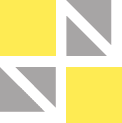
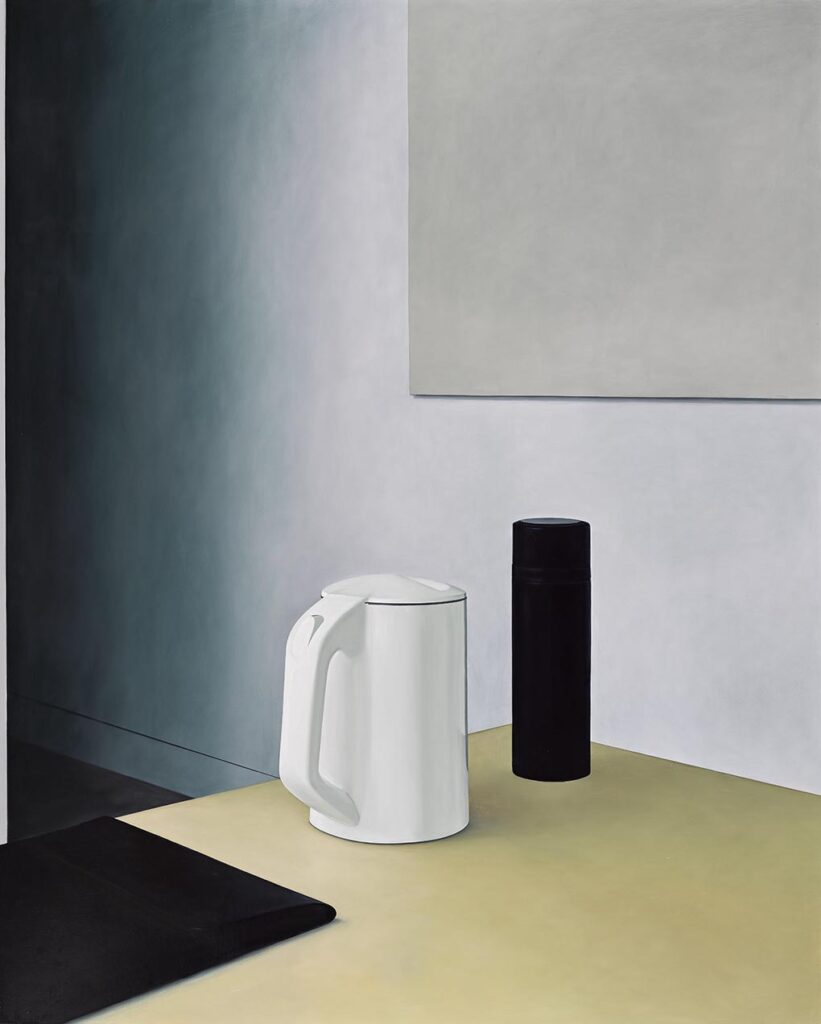
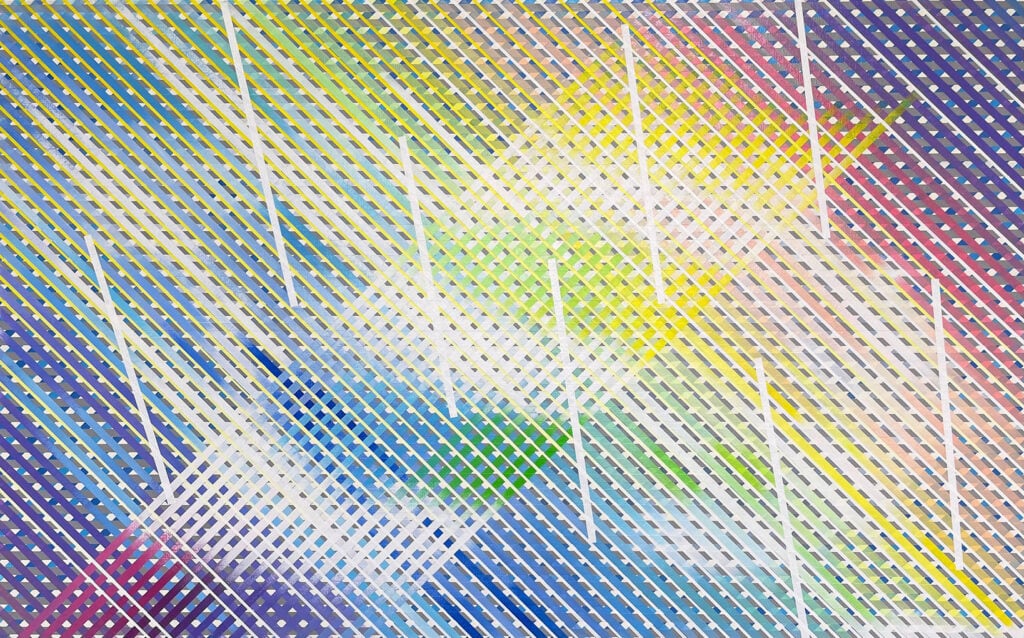
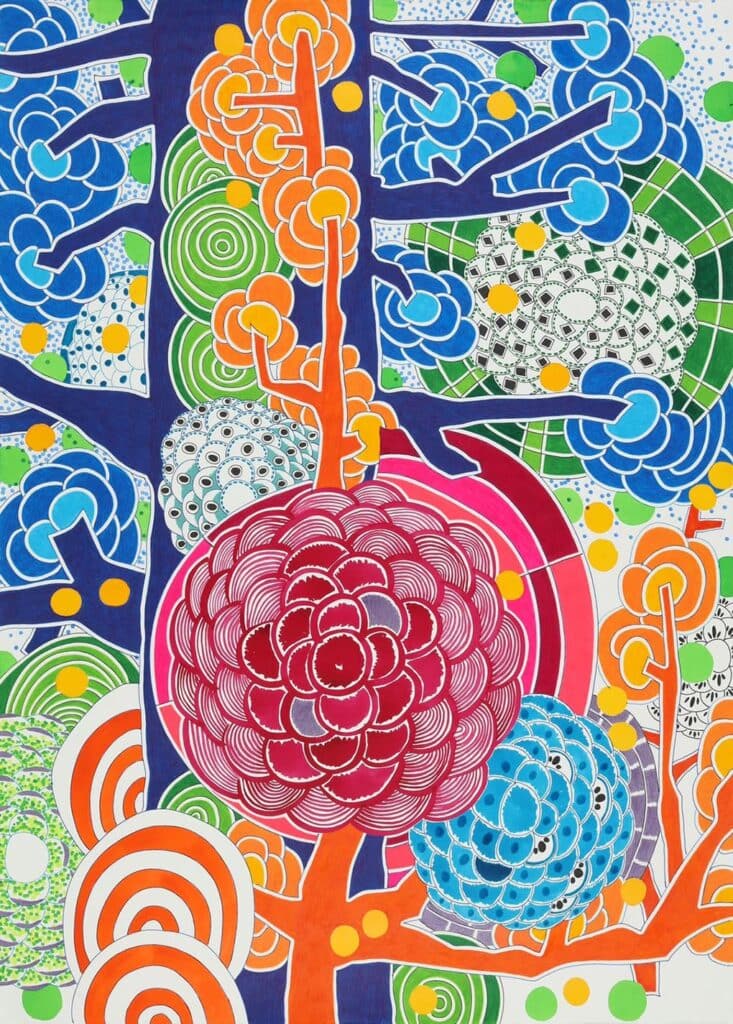
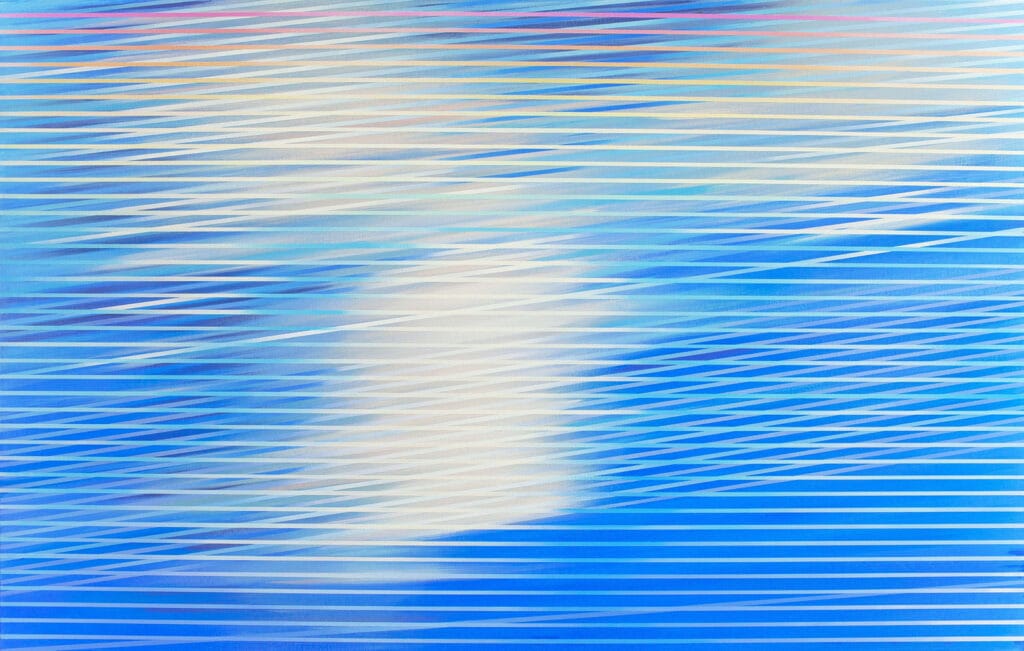
_微噴輸出_42-x-52-cm_2023-1024x543.jpg)
